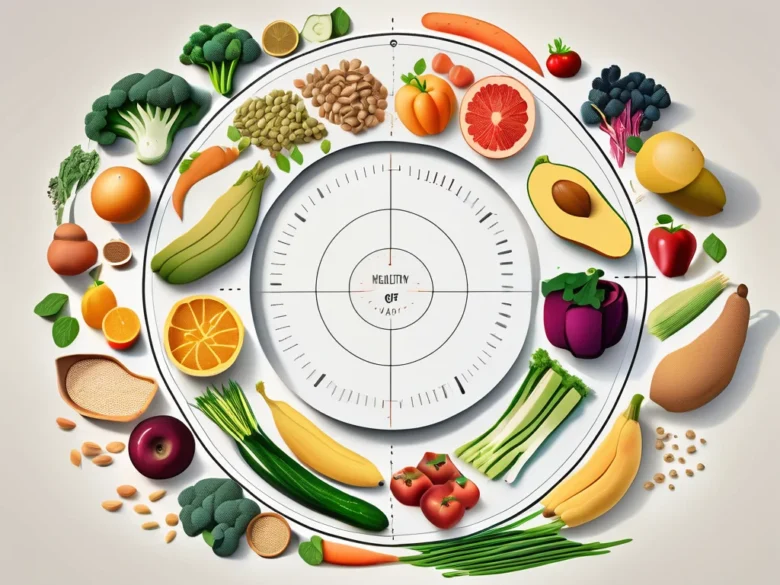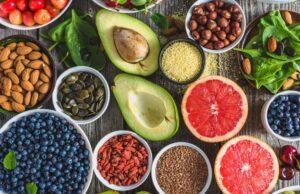Eating healthy doesn’t have to be a chore. In fact, it can be an exciting journey toward nourishing your body and feeling your best. With the abundance of food options available today, making balanced choices is more important than ever. But what does “healthy eating” truly mean? It’s about finding harmony in the foods you consume while ensuring your body gets all the essential nutrients it needs.
Balanced nutrition plays a crucial role in maintaining overall wellness, boosting energy levels, and even enhancing mood. By adopting a few simple habits, you can transform your dietary routine into one that promotes health without sacrificing taste or enjoyment. Ready to dive into some practical tips that will elevate your meals? Let’s explore seven effective ways to build a nutritious foundation for a healthier lifestyle!
The Importance of Balanced Nutrition
Balanced nutrition is the cornerstone of good health. It fuels our bodies, enhances our mood, and supports overall well-being. When we consume a variety of nutrients, we empower our immune system to function optimally.
Each food group plays a unique role in maintaining health. Carbohydrates provide energy, proteins build and repair tissues, while fats are essential for hormone regulation and nutrient absorption. Missing out on any one group can lead to deficiencies that impact both physical and mental performance.
Moreover, balanced nutrition helps prevent chronic diseases like diabetes, heart disease, and obesity. By making mindful choices about what we eat daily, we create lasting habits that contribute to longevity.
A focus on balance encourages us to appreciate diverse flavors from various cuisines. This not only makes meals more enjoyable but also enriches our relationship with food itself.
Tip 1: Fill Up on Fruits and Vegetables
Fruits and vegetables are the cornerstone of a healthy diet. They pack in vitamins, minerals, and antioxidants that your body craves. Plus, they’re low in calories but high in fiber. This combination makes them perfect for feeling full without overindulging.
Incorporating a colorful array into your meals can be delightful. Think vibrant berries, leafy greens, or crunchy bell peppers—each brings its unique benefits to the table.
Don’t shy away from experimenting; try new recipes or cooking methods like roasting or steaming to keep things exciting. A simple fruit salad can brighten up breakfast while a veggie stir-fry adds life to lunch.
Aim for at least five servings each day by including fruits and veggies across all meals and snacks. Remember, variety not only keeps your plate interesting but also ensures you get a broad spectrum of nutrients essential for optimal health.
Tip 2: Incorporate Whole Grains into your Diet
Whole grains are a powerhouse of nutrition. They provide essential vitamins, minerals, and fiber that refined grains simply lack. By choosing whole grains like brown rice, quinoa, and oats, you can enhance your meals effortlessly.
These grains not only help keep you full longer but also support digestive health thanks to their high fiber content. This means fewer cravings throughout the day—definitely a win-win!
Switching from white bread to whole grain options can be an easy change. Try out whole wheat pasta or add barley to soups for extra texture and nutrients.
Experiment with different cooking methods too! You might find that roasting or steaming enhances the flavor of these wholesome ingredients. Incorporating them into salads or side dishes is another way to enjoy their benefits while keeping your meals exciting.
Tip 3: Include Lean Protein Sources in Every Meal
Protein is a crucial building block for your body. It supports muscle development, repair, and overall health. Including lean protein sources in every meal ensures you get the nutrients necessary for optimal function.
Think chicken breast, turkey, fish, or plant-based options like lentils and quinoa. These choices are low in saturated fat but high in essential amino acids. They help keep you fuller for longer too.
Snacking on Greek yogurt or cottage cheese can also boost your protein intake without excess calories. Eggs are another versatile option; they can be scrambled, poached, or made into an omelet with veggies.
Experimenting with different proteins keeps meals interesting and satisfying. Try marinating tofu or grilling fish to bring out unique flavors while maintaining nutritional value. Embrace variety to enjoy all the benefits that lean protein has to offer day after day.
Tip 4: Choose Healthy Fats over Unhealthy Ones
Fats are essential for our bodies, but not all fats are created equal. Choosing healthy fats can make a significant difference in your overall nutrition and well-being.
Opt for sources like avocados, nuts, seeds, and olive oil. These options provide beneficial nutrients that promote heart health and improve brain function. They also help with the absorption of vitamins A, D, E, and K.
On the other hand, limit saturated fats found in fatty cuts of meat and full-fat dairy products. Trans fats present in many processed snacks should be avoided altogether.
By making smarter choices about fat intake, you not only enhance flavor but also support long-term health. It’s a small switch that can yield big benefits over time.
Tip 5: Limit Processed Foods and Added Sugars
Processed foods often come with a long list of ingredients. Many are loaded with unhealthy additives, preservatives, and sugars that can wreak havoc on your health.
These products may be convenient, but they can lead to weight gain and various health issues. Instead of reaching for the packaged snacks or frozen meals, consider whole food options. Fresh fruits, vegetables, nuts, and seeds offer essential nutrients without the unnecessary extras.
Added sugars are another hidden danger in many diets. They’re found in sodas, sweets, and even seemingly healthy items like yogurt or sauces. Reading labels is crucial; significant amounts can sneak into your diet without you realizing it.
Making small changes can limit these culprits effectively. Opt for natural sweeteners like honey or maple syrup when needed. The goal is to enjoy real flavors while nourishing your body properly instead of filling up on empty calories from processed sources.
Tip 6: Practice Portion Control
Portion control is a game-changer when it comes to maintaining balanced nutrition. It’s easy to lose track of how much we eat, especially with large serving sizes often found at restaurants or packaged foods. By being mindful of your portions, you can enjoy your favorite meals without overindulging.
Start by using smaller plates or bowls. This simple trick makes your servings appear larger and helps you feel satisfied with less food. Take time to truly savor each bite, allowing yourself to recognize when you’re full. Listen to your body—it knows what it needs.
Meal prepping can also aid in managing portions effectively. Preparing meals ahead of time allows you to gauge appropriate serving sizes while ensuring you’re still getting a variety of nutrients throughout the week.
Remember that healthy eating isn’t about strict dieting; it’s about balance and moderation. Allow yourself the occasional treat while remaining conscious of portion sizes so that they fit within your overall nutritional goals.
Integrating these tips into daily life doesn’t have to be overwhelming—small changes lead to significant impacts on health and well-being over time! Start today, embrace the journey toward better nutrition, and discover how delicious healthy eating can be.




